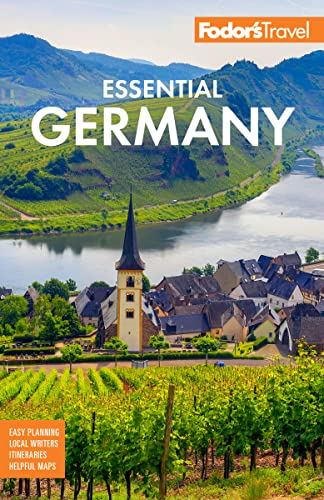If You Like
Being Outdoors
The Germans have a long-standing love affair with Mother Nature. The woods, as well as the mountains, rivers, and oceans, surface repeatedly in the works of renowned German poets and thinkers. The idea that nature is key to the mysteries of the soul can be seen in works as varied as those by naturalist Romantic painter Caspar David Friedrich and the 20th-century philosopher Martin Heidegger. Today, Germany has designated large tracts of land as national recreation areas, and cities boast extensive urban parks and gardens.
The Bavarian Alps, where the Winter Olympics town Garmisch-Partenkirchen offers cable cars to ascend Germany's highest mountain, the Zugspitze, is one of the country's best spots for skiing in winter and hiking in summer.
Lakes such as Chiemsee and Bodensee dot the area between the Alps and Munich and many hikers and bikers enjoy circling them. Boat rentals are possible, but you'll often need a German-recognized license. In summer, walk a trail around the pure waters of Lake Königssee, pausing to hear your voice echo off the surrounding rock faces.
On the island of Rügen, the turn-of-the-20th-century resort town Binz stands before the gentle (and cold) waters of the Baltic Sea. Even on windy days you can warm up on the beach in a sheltered beach chair for two. Among the Baltic Coast's most dramatic features are Rügen's white chalk cliffs in Jasmund National Park, where you can hike, bike, or sign up for nature seminars and tours.
Medieval Towns
The trail of walled towns and half-timber houses known as the Romantic Road is a route long marketed by German tourism, and therefore the road more traveled. The towns are lovely, but if you'd prefer fewer tour groups spilling into your photographs, venture into the Harz Mountains in the center of Germany.
Rothenburg-ob-der-Tauber is known for its impressively preserved medieval center, giving visitors the feeling they've stepped back in time. Some 400 km farther north, Quedlinburg has been declared a UNESCO World Heritage site. With 1,600 half-timber houses, it has more of these historic, typically northern German buildings than any other town in the country.
A mighty fortress south of the Harz Mountains is the Wartburg, in the ancient, half-timber town of Eisenach. Frederick the Wise protected Martin Luther from papal proscription within these stout walls in the 16th century.
Options for exploring closer to Munich include Regensburg and Nürnberg. The former is a beautiful medieval city, relatively unknown even to Germans, and has a soaring French Gothic cathedral that can hold 6,000 people. Nürnberg dates to 1050, and is among the most historic cities in the country. Both emperors and artists convened here, including the Renaissance genius Albrecht Dürer. If you're in Hessen, the birthplace of the Brothers Grimm, you can follow the Fairy-Tale Road. Stop off for a day of natural saltwater swimming in the idyllic medieval town of Bad Sooden-Allendorf.
The Arts
With as many as 600 galleries, world-class private collections, and ateliers in every Hinterhof (back courtyard), Berlin is one of Europe's contemporary art capitals. Berlin's Museumsinsel (Museum Island), a UNESCO World Heritage site, is its crowning jewel. The small island hosts a complex of five state museums, including the Altes Museum, with a permanent collection of classical antiquities; the Alte Nationalgalerie, with 18th- to early-20th-century paintings and sculptures from the likes of Cézanne, Rodin, Degas, and Germany's own Max Liebermann; the Bode-Museum, containing German and Italian sculptures, Byzantine art, and coins; and the Pergamonmuseum, whose highlight is the world-famous Ishtar Gate, an entrance to the ancient city of Babylon in modern-day Iraq.
Leipzig is a rising star in the European art world. The Museum der Bildenden Künste (Museum of Fine Arts) is the city's leading gallery, followed closely by the Grassimuseum complex. The Spinnerei (a former cotton mill) has become Leipzig's prime location for contemporary art, and houses more than 80 artists and galleries, especially those of the New Leipzig School.
Fans of old-master painters must haunt the halls of the Zwinger in Dresden, where most works were collected in the first half of the 18th century, and the Alte Pinakothek in Munich, which has one of the world's largest collections of Rubens.
Castles and Palaces
Watching over nearly any town with a name ending in "-burg" is a medieval fortress or Renaissance palace. These have often been converted into museums, restaurants, or hotels.
The Wartburg in Eisenach is considered "the mother of all castles" and towers over the foothills of the Thuringian Forest. Abundant vineyards surround Schloss Neuenburg, which dominates the landscape around the sleepy village of Freyburg (Unstrut). The castle ruins overlooking the Rhine River are the result of constant fighting with the French, but even the remains were picturesque enough to inspire 19th-century Romantics. Burg Rheinstein is rich with Gobelin tapestries, stained glass, and frescoes.
Schloss Heidelberg mesmerizes with its Gothic turrets, Renaissance walls, and abandoned gardens. Other fortresses lord over the Burgenstrasse (Castle Road) in the neighboring Neckar Valley. You can stay the night (or just enjoy an excellent meal) at Burg Hornberg, or at any of a number of other castle-hotels in the area.
The medieval Burg Eltz in the Mosel Valley looms imposingly, and its high turrets make it look like something straight out of a Grimm fairy tale. The castle has been perfectly preserved and owned by the same family for almost a thousand years.
Louis XIV's Versailles inspired Germany's greatest castle-builder, King Ludwig II, to construct the opulent Schloss Herrenchiemsee. One of Ludwig's palaces in turn inspired a latter-day visionary—his Schloss Neuschwanstein is the model for Walt Disney's Sleeping Beauty Castle. Schloss Linderhof, also in the Bavarian Alps, was Ludwig's favorite retreat.




